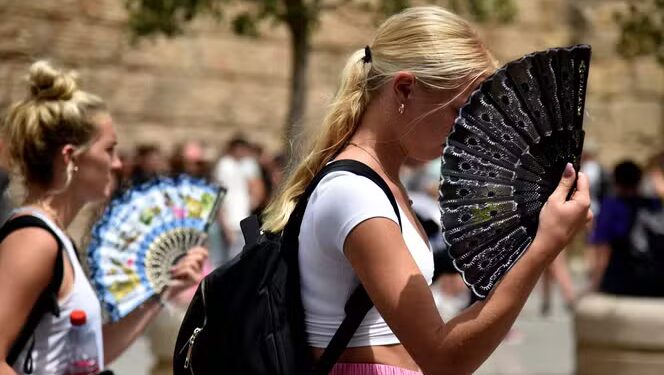By Ebi Kesiena
Human-made climate heating was responsible for two out of every three heat-related deaths recorded across Europe during this summer’s extreme temperatures, according to an early assessment of mortality in 854 major cities.
Researchers in epidemiology and climate science estimated that 16,500 of the 24,400 deaths between June and August were the result of excessive heat intensified by greenhouse gas emissions.
The preliminary study, based on established scientific methods though not yet peer-reviewed found that climate disruption raised urban temperatures by an average of 2.2 C, significantly worsening the toll from dangerously high heat.
“The causal chain from fossil fuel burning to rising heat and increased mortality is undeniable,” said Friederike Otto, a climate scientist at Imperial College London and a co-author of the report. “If we had not continued to burn fossil fuels over the last decades, most of the estimated 24,400 people in Europe wouldn’t have died this summer.”
The scientists used local relationships between temperature and death to model excess mortality during the hottest months of the year, and compared their results, which cover cities where almost one-third of the European population lives with a hypothetical world without any climate change.
They found the extra heat was responsible for about 68% of the estimated deaths. Older people were hit hardest by punishing temperatures, the study found, with 85% of the dead over the age of 65, and 41% over the age of 85.
“The vast majority of heat deaths happen in homes and hospitals, where people with existing health conditions are pushed to their limits,” said Garyfallos Konstantinoudis, an epidemiologist at Imperial College London and co-author of the study. “But heat is rarely mentioned on death certificates.”
Several individuals who lost their lives outdoors during Europe’s searing summer have been identified by local media. Among them was Manuel Ariza Serrano, a 77-year-old former councillor from La Rambla, Spain, who collapsed and died during a walk in August. According to the town council and former colleagues in the Córdoba region, the area recorded temperatures of 45 C that weekend.
Another victim, Brahim Ait El Hajjam, a 47-year-old father of four and flooring company owner in northern Italy, passed away while pouring concrete at a school site near Bologna. The temperature had reached 38 C that day. His death occurred just two days before a regional directive was due to restrict outdoor construction work during the hottest hours of the afternoon.
“He called my mother to tell her that he’d come home to prepare lunch,” his 19-year-old son, Salah, told the Italian TV station Antena 3 after his death. “That he’d be home by noon.”
Konstantinoudis noted that the public health dangers posed by extreme heat continue to be underestimated.
“No one would expect someone to risk their life working in torrential rain or hurricane winds, But dangerous heat is still treated too casually.” he said.
While Europe’s cities are more resilient to high temperatures than they were in 2003, when a catastrophic heatwave claimed 70,000 lives, emergency services are now under strain as temperatures rise and populations age.
Medical professionals are urging the creation of local action plans for heatwaves, the expansion of green spaces to cool overheated cities, and improved access to air-conditioning for vulnerable groups such as elderly residents in care homes.
Madeleine Thomson, an adaptation expert with the health non-profit Wellcome, who was not part of the research team, stressed that the findings highlight a universal risk.
“No city in Europe is immune to deaths from extreme heat’’, she said.
“If we don’t act now, the toll will rise, We must urgently phase out fossil fuels and implement policies that protect those most at risk from increasingly deadly heatwaves.” She added.


































